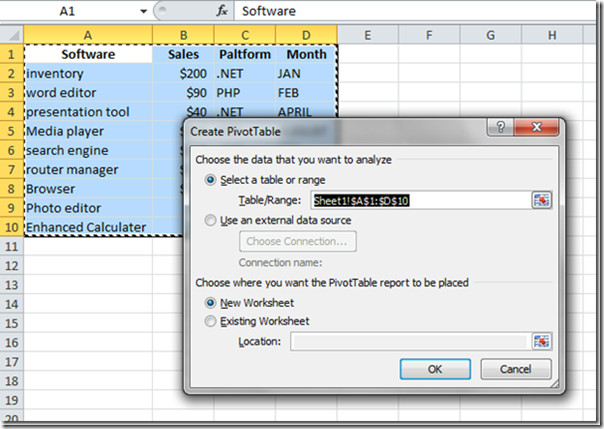
While sorting your table is helpful for viewing the data a certain way, filtering it is useful for calling out specific data. Sorting is perfect for arranging textual data alphabetically, numerical data by amount, or time-based data chronologically. So, you’re not only sorting that column you’re also sorting your table by that column. Keep in mind that although you’re sorting using a single column, the remainder of the data in your table will shift.


You have two quick and easy options for sorting at the top of the window: ascending and descending. Click the “Filter Button” (arrow) next to the header for the column that you want to use. When you’re ready to put that Excel table to work, you have options to sort, filter, and search your table data. On the right side of the ribbon, use the arrows to view and then select a color scheme. Whether you started your table with a particular style or just used the default, you can change it here. Check the boxes for the items that you want to display. In the center of the ribbon are checkboxes to show things like a total row, the first and last columns, and the filter button. Enter the name you want to use in the “Table Name” field.

You can give your table a more meaningful name, which is helpful if you plan to reference it in your workbook. Table nameĮach table you create is given a default name of Table 1, Table 2, and so on. Open that tab and check out the following options. Select any cell in the table and you’ll see the “Table Design” tab appear above the ribbon. Now that you have your table, you can customize it. Just note that if you do have a header row but choose not to use the feature, that row will then be treated as data, which affects your table filtering. If you do not check the box to use table headers, Microsoft Excel will assign them by default as Column 1, Column 2, and so on, which you can edit if you wish. If you want to use your own header row for the table, check the box for “My Table Has Headers” and click “OK” when you finish. To do this, select cell A1 and type Order ID.You can either manually edit the cell range in the box or drag your cursor through the area on your sheet while the window remains on the screen. Next in the Values section, click on the "Sum of Order ID" and drag it to the Rows section.įinally, we want the title in cell A1 to show as "Order ID" instead of "Row Labels". In this example, we've selected the checkboxes next to the Order ID and Quantity fields. Next, choose the fields to add to the report. Your pivot table should now appear as follows: In this example, we've chosen cells A1 to F16 in Sheet1 as indicated by Sheet1!$A$1:$F$16. Select the range of data for the pivot table and click on the OK button. In the Tables group, click on the Tables button and select PivotTable from the popup menu.Ī Create PivotTable window should appear.

Next, select the Insert tab from the toolbar at the top of the screen. In this example, we've selected cell A1 on Sheet2. Highlight the cell where you'd like to create the pivot table. In this example, the data is found on Sheet1. To create a pivot table in Excel 2016, you will need to do the following steps:īefore we get started, we first want to show you the data for the pivot table.
#How to use pivot tables in excel 2010 download
If you want to follow along with this tutorial, download the example spreadsheet.ĭownload Example Steps to Create a Pivot Table


 0 kommentar(er)
0 kommentar(er)
